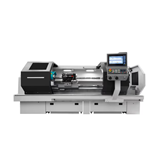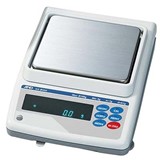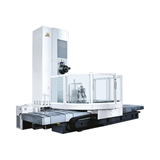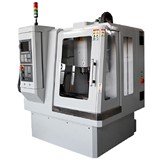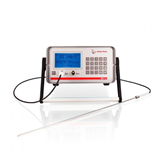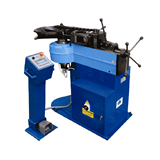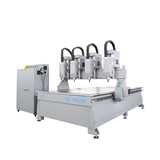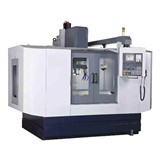Compare 5 Axis CNC machine prices in Australia. Learn about machine types, costs, warranties & what to check before buying with this expert guide.
Key Takeaways
- Prices: 5-axis CNC machines in Australia range from $80,000 to over $500,000, depending on brand, features, and capabilities.
- Types: 5-axis machines are available as vertical, horizontal, and hybrid configurations, with vertical being the most common.
- Financing: Equipment financing options such as leasing and loans are available, with terms typically ranging from 3 to 5 years.
- Maintenance: Regular maintenance costs typically range from $5,000 to $15,000 annually.
- Compliance: Ensure that machines meet local workplace safety and ISO standards.
Introduction
If you're in the market for a 5-axis CNC machine in Australia, you're likely looking for the most advanced, accurate, and versatile machines to take your manufacturing or machining operations to the next level. But with so many options available, how do you navigate pricing, functionality, and long-term value? This guide will help you make an informed purchase decision, covering everything from types of machines to pricing, operations, maintenance, and financing.
Types of 5-Axis CNC Machines
When selecting a 5-axis CNC machine, it’s important to understand the different types available in the market. The configuration of the machine plays a significant role in its capabilities and the industries it can serve. Below are the three main types of 5-axis machines:
-
Vertical 5-Axis CNC Machines
- Most common configuration, ideal for small to medium-sized parts.
- Typically more affordable than horizontal models.
- Used for industries like aerospace, automotive, and medical.
-
Horizontal 5-Axis CNC Machines
- Designed for large, heavy parts with excellent chip removal.
- Great for high-volume production due to their efficiency.
- Suitable for industries like moulding and tool-making.
-
Hybrid 5-Axis CNC Machines
- Combines the benefits of both vertical and horizontal machines.
- Offers greater versatility for complex, multi-axis tasks.
- Popular in high-precision industries.
Prices of 5-Axis CNC Machines in Australia
Prices for 5-axis CNC machines can vary widely based on the configuration, brand, and specifications. Here's a rough breakdown of the cost:
- Entry-level (small-scale, less advanced models): $80,000 to $150,000
- Often used for smaller parts and simpler machining tasks.
- Ideal for businesses that don’t require high-volume or extreme precision.
- Mid-range models (mid to high-end capabilities): $150,000 to $300,000
- Suitable for general manufacturing and industries such as aerospace, medical, and automotive.
- Offers improved precision, speed, and reliability.
- High-end models (top-tier machines with maximum precision and capabilities): $300,000 to $500,000+
- For industries requiring unmatched precision, such as aerospace, defence, and medical devices.
- These machines are equipped with advanced features such as adaptive control, automated tool changers, and integrated measurement systems.
Operations of a 5-Axis CNC Machine
Operating a 5-axis CNC machine requires skill, training, and an understanding of how to program and manage the machine for various tasks. Here's a breakdown of key operational aspects:
- Programming: Typically done through software such as G-code or CAM systems (Computer-Aided Manufacturing). Mastery of these systems is essential for getting the most out of your machine.
- Setup: Involves precisely loading the material, ensuring proper calibration, and configuring tools.
- Precision: 5-axis machines provide high accuracy with tight tolerances of 0.005 mm or better.
- Complexity: Can handle multi-axis machining with a single set-up, allowing for complex parts to be produced with minimal intervention.
Maintenance and Operation Costs
Owning a 5-axis CNC machine comes with regular maintenance costs to ensure optimal performance. Below are the typical costs you might face:
- Annual Maintenance: $5,000 - $15,000 per year.
- Includes tool replacements, software updates, calibration, and service visits.
- Repair Costs: $1,000 - $5,000 per incident, depending on the severity of the problem.
- Common repairs include spindle replacements and drive motor issues.
- Consumables: Such as cutting tools, coolant, and lubricants can cost between $2,000 and $5,000 annually, depending on usage.
Training Staff and Preventive Maintenance
- Training for Operators: Proper operator training is crucial to optimise machine efficiency and reduce errors. Training should cover basic machine operation, safety protocols, software use, and preventative maintenance.
- Maintenance Schedules: To maximise the lifespan of your CNC machine, follow a strict maintenance schedule that includes:
- Regular cleaning and calibration
- Replacing worn-out parts like tools or spindles
- Monitoring system performance via diagnostics
- Software Updates: Don’t neglect the software. Keep it up-to-date to ensure compatibility with the latest technological improvements and industry standards.
Parts and Warranties
The parts of a 5-axis CNC machine are essential for maintaining its performance over time. Key parts include:
- Spindles
- Linear guideways
- Ball screws
- Motors and drives
When purchasing a 5-axis machine, it's critical to check the warranty offered by the manufacturer. Typically, warranties for new CNC machines range from 1 to 3 years, covering spindle failures, motor defects, and other operational issues.
Some manufacturers also offer extended warranties or service contracts for an additional cost, which can provide peace of mind and long-term savings.
Financing Options for 5-Axis CNC Machines in Australia
Due to the significant investment required to purchase a 5-axis CNC machine, many businesses in Australia opt for financing options. Common financing options include:
- Leasing:
- Capital Lease: Allows businesses to own the machine at the end of the lease term.
- Operating Lease: Offers lower monthly payments with no option to own the machine.
- Equipment Loans:
- Term Loans: Available for terms ranging from 3 to 5 years. Monthly repayments are fixed and can be structured to suit your business's cash flow.
- Balloon Loans: Involves paying lower monthly payments, with a large balloon payment due at the end of the term.
- Hire Purchase:
- The machine is effectively purchased through a series of payments, with ownership passing at the end of the contract term.
Compliance and Certification Considerations
When purchasing a 5-axis CNC machine in Australia, it's important to ensure that the machine complies with relevant safety standards and certifications:
- Workplace Health and Safety (WHS) Compliance: The machine should meet the Australian Safety Standards (AS) for machinery, including safety guards, emergency stops, and other protective features.
- ISO Certification: Ensure that the manufacturer follows ISO 9001 quality management standards.
- CE Marking: For machines imported from overseas, check for CE certification, ensuring the product meets European Union health, safety, and environmental protection standards.
Frequently Asked Questions (FAQs)
Q1: How long does it take to deliver a 5-axis CNC machine in Australia?
Delivery times can range from 2 to 6 months, depending on the machine specifications and availability.
Q2: Can I get financing for a used 5-axis CNC machine?
Yes, financing is available for used machines, but interest rates may be higher, and terms may be shorter.
Q3: What’s the typical lifespan of a 5-axis CNC machine?
With proper maintenance, a 5-axis CNC machine can last 15 to 20 years. However, this depends on usage and maintenance.
Q4: Are there tax incentives for purchasing a 5-axis CNC machine?
Yes, businesses in Australia can take advantage of the Instant Asset Write-Off program, allowing businesses to write off the cost of assets purchased under $150,000 in the 2025 financial year.
Conclusion
Purchasing a 5-axis CNC machine is a significant investment, but it can lead to increased productivity, precision, and profitability for your business. By understanding the types, prices, operational needs, financing options, and compliance requirements, you can make a well-informed decision. With the right machine, financing, and maintenance plan in place, your business can stay competitive and achieve long-term success in the manufacturing industry.



